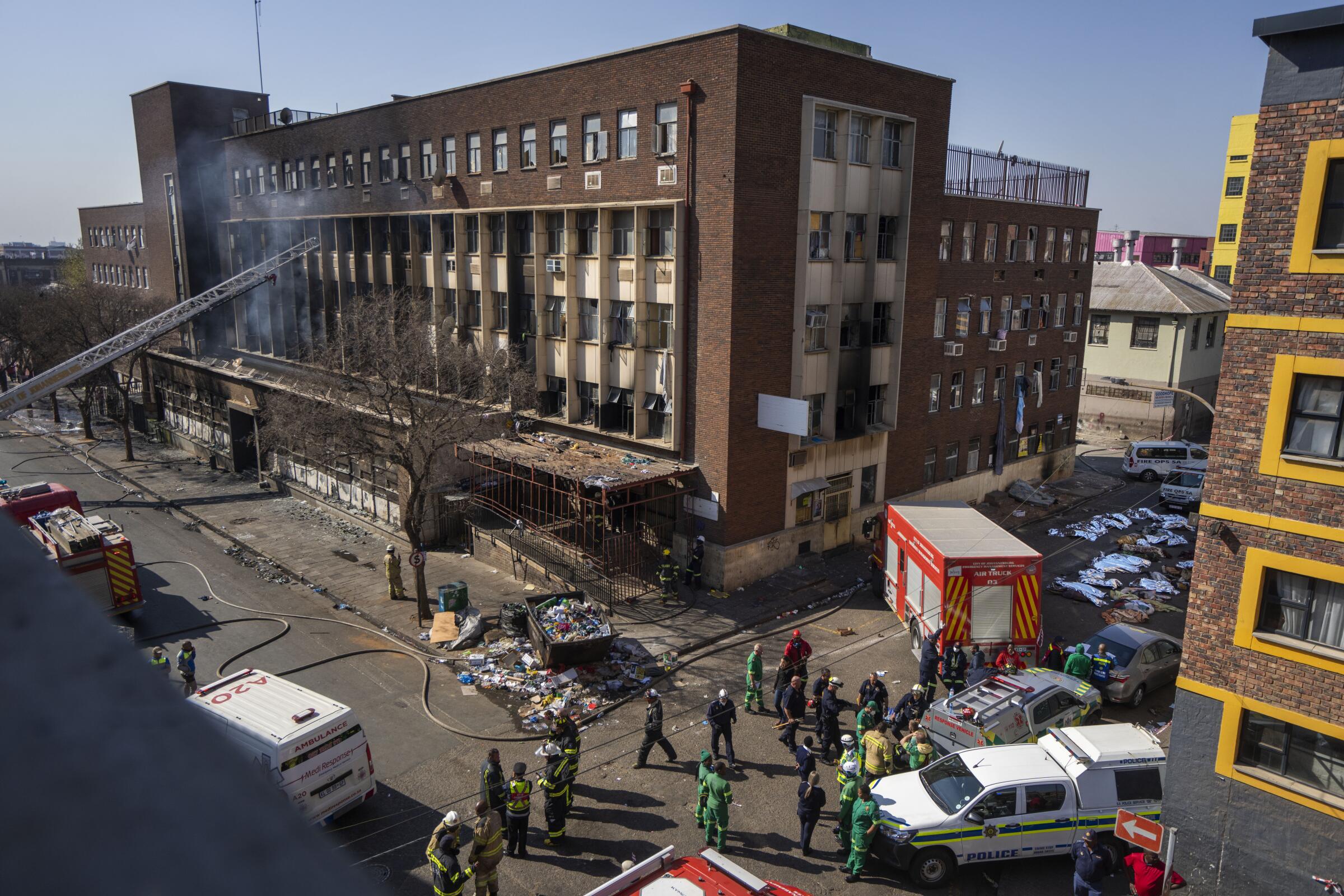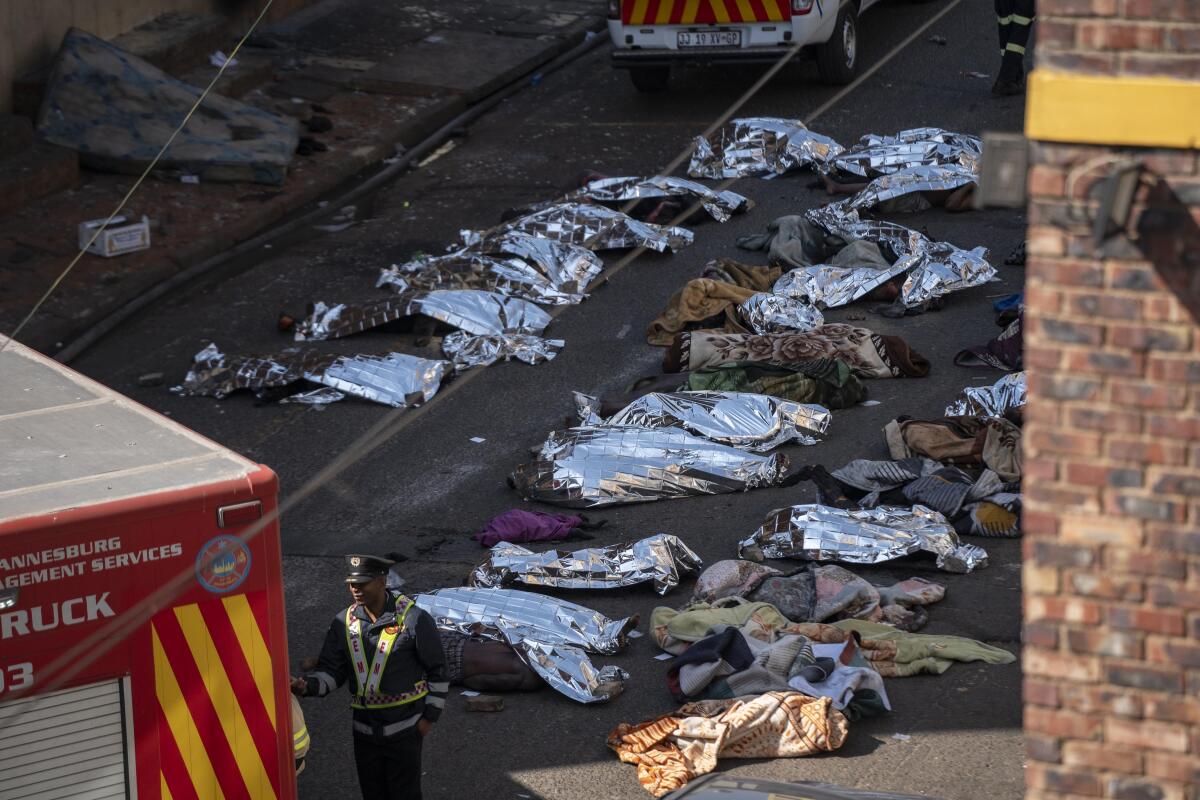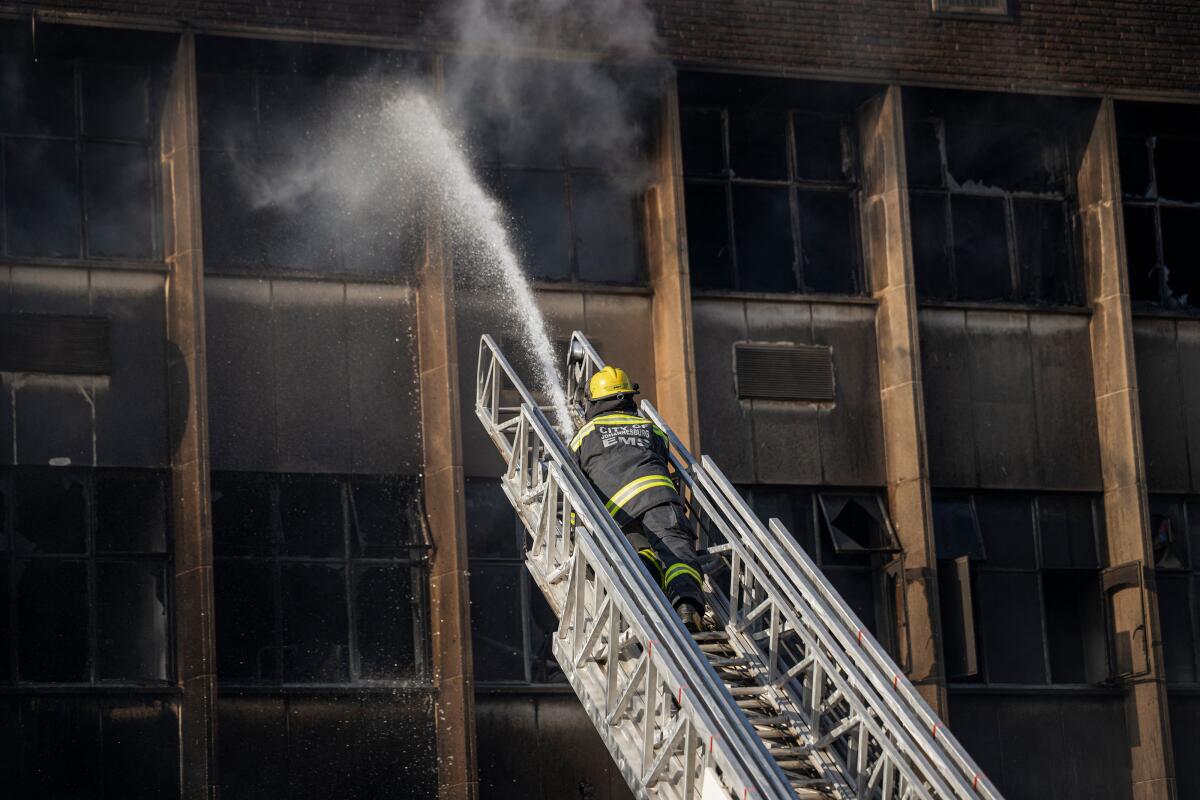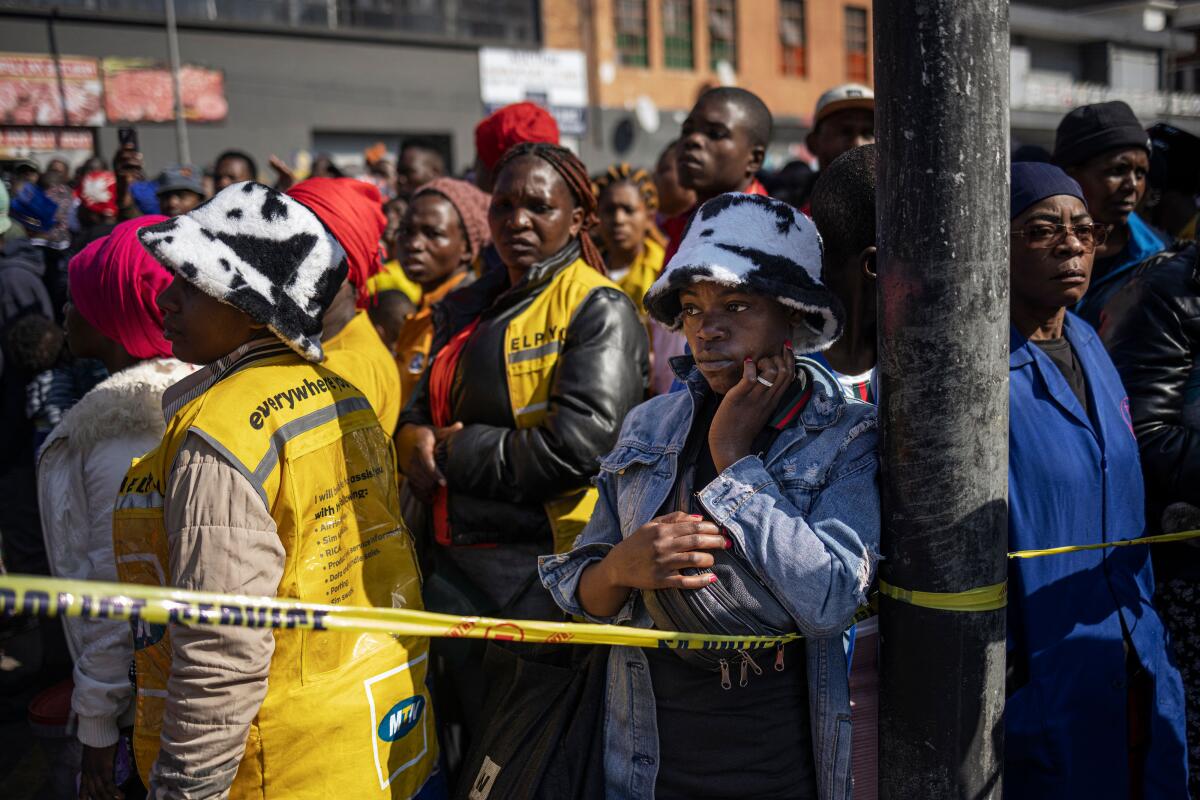Newsletter
Sign up for Essential California
The most important California stories and recommendations in your inbox every morning.
You may occasionally receive promotional content from the Los Angeles Times.

JOHANNESBURG — A nighttime fire ripped through a rundown apartment building mainly occupied by homeless people and squatters in Johannesburg early Thursday, leaving at least 74 dead, officials said. Some people threw babies out of third-story windows to others waiting below in the desperate scramble to evacuate, witnesses said.
At least 12 of those killed were children, the youngest a 1-year-old, according to city and medical officials. They said at a news conference that an undetermined number of people were still missing and many bodies recovered were burned beyond recognition.
More than 50 people were injured, six of whom were in a serious condition in the hospital. Emergency services officials had earlier warned that the death toll could rise as they continued to search the scene more than 12 hours after the blaze broke out around 1 a.m.
Dozens of bodies recovered by firefighters were laid out on a side road outside the apartment block, some in body bags, others covered in silver sheets or blankets after the body bags ran out. They were eventually taken away in pathology department vehicles.
“Over 20 years in the service, I’ve never come across something like this,” Johannesburg Emergency Services Management spokesman Robert Mulaudzi said.

Authorities hadn’t established the cause of the fire, but Mgcini Tshwaku, a local government official, said the initial evidence suggested that it started with a candle. Inhabitants used candles and fires for light and to keep warm in the cold of the Southern Hemisphere winter, he said.
South Africa’s worsening power crisis — leaving homes and businesses without electricity for up to 10 hours a day — is strangling Africa’s most developed economy.
Firefighters were still making their way through the remnants of shacks and other informal structures that crowded the inside of the derelict five-story building in the heart of Johannesburg’s central business district. Smoke seeped out of the blackened building even though the fire was out, while twisted blankets and sheets hung like ropes out of shattered windows to show how people had used them to try to escape the flames.
Some of the survivors described how they jumped out of windows to escape the blaze, but only after tossing their children to others below.
“Everything happened so fast, and I only had time to throw the baby out,” said Adam Taiwo, who managed to save his 1-year-old son and himself. “I also followed him after they caught him downstairs.” Taiwo said he did not know where his wife, Joyce, was.
A witness who lives in a building across the road said that he saw other inhabitants also throwing babies out of the burning building and that at least one man died when he jumped from a window on the third floor and hit the concrete sidewalk “head first.”
They thought the grass fire was contained, but wind conditions were still extreme. Now the decision to pull firefighters away shortly before the Maui fire reignited has become a flashpoint, as questions mount over whether more could have been done to stave off the destruction.
Another witness who didn’t give his name told television news channel ENCA that he lived in a building next door and heard people screaming for help and shouting, “We’re dying in here!” when the fire started.
As the fire raged, some occupants got trapped behind locked gates at the exits, Tshwaku said, and it was clear that there were no proper fire escape routes.
“People couldn’t get out,” he said, adding that some of the victims may have died after jumping out of the building.
As many as 200 people may have been living in the building, witnesses said, including in the basement, which should have been used as a parking garage. Others estimated an even higher number of occupants.
Breaking News
Get breaking news, investigations, analysis and more signature journalism from the Los Angeles Times in your inbox.
You may occasionally receive promotional content from the Los Angeles Times.
Johannesburg Mayor Kabelo Gwamanda said 141 families were affected by the tragedy, but he could not say exactly how many people were in the building at the time of the blaze. Many of the people inside were foreign nationals, he said. That could make identifying victims and tracing the missing difficult because many were probably in South Africa illegally and had no South African documents, other officials said.
A woman who asked not to be identified said she lived in the building and escaped the flames with her grown son and a 2-year-old child. She stood outside holding the toddler for hours and said she didn’t know what happened to two other children from her family.

“I just saw smoke everywhere, and I just ran out with this baby only,” the woman said. “I don’t have any home, and I don’t know what to do anymore.”
In a statement, South African President Cyril Ramaphosa said: “This is a great tragedy felt by families whose loved ones perished in this awful manner, and our hearts go out to every person affected by this event.”
Firefighters are battling a major blaze at South Africa’s national Parliament complex in the southern city of Cape Town.
A spokesperson for Ramaphosa said he had offered the assistance of the national disaster management agency if needed.
Johannesburg is rated as Africa’s richest city, but its center is run-down and often neglected. Abandoned and broken-down buildings are common, and people desperate for some form of accommodation often find shelter in them. City authorities refer to the structures as “hijacked buildings,” and they have been a problem for years, if not decades.
While city authorities were catching much of the blame for the deaths, they said it was often difficult to get courts to issue orders to evict the homeless from such buildings.
The building in question was reportedly owned by the city and is considered a heritage site but not regulated by the local government. It was once the site of South Africa’s notorious “pass” office, which controlled the movement of Black people under the racist system of apartheid, according to a blue historical plaque hanging at the entrance.
When high winds on Maui brought down power poles, the electrical wires were bare, uninsulated metal that could spark on contact with the dry grass below.
“Denied a place in the city, many were ordered to leave Johannesburg,” the plaque reads.
Decades later, the deadly fire has made the building an emblem of the exclusion of poor people in Johannesburg.
Speaking at the scene, Gauteng province’s police commissioner, Lt. Gen. Elias Mawela, said police were aware of about 700 buildings in central Johannesburg that were derelict and abandoned by their official owners. He urged city authorities to act.
“Shut it down, that building,” Mawela said.
Mulaudzi, the emergency services spokesman, said the fire took three hours to contain, and firefighters needed time to work through all five floors.

He said there were “obstructions” everywhere that would have made it very difficult for residents to escape the deadly blaze and that hindered emergency crews trying to work through the site.
The chance of anyone being found alive hours after the fire broke out was “very slim,” he said.
Sign up for Essential California
The most important California stories and recommendations in your inbox every morning.
You may occasionally receive promotional content from the Los Angeles Times.